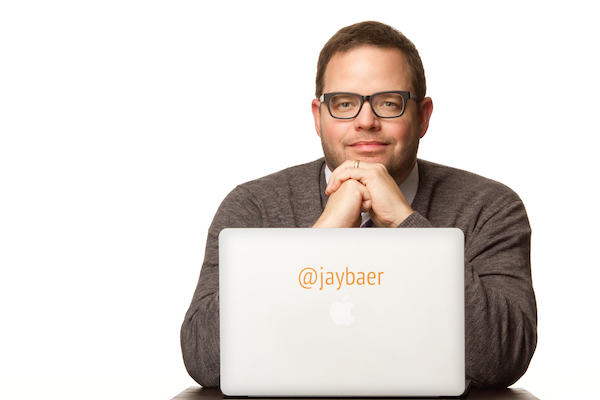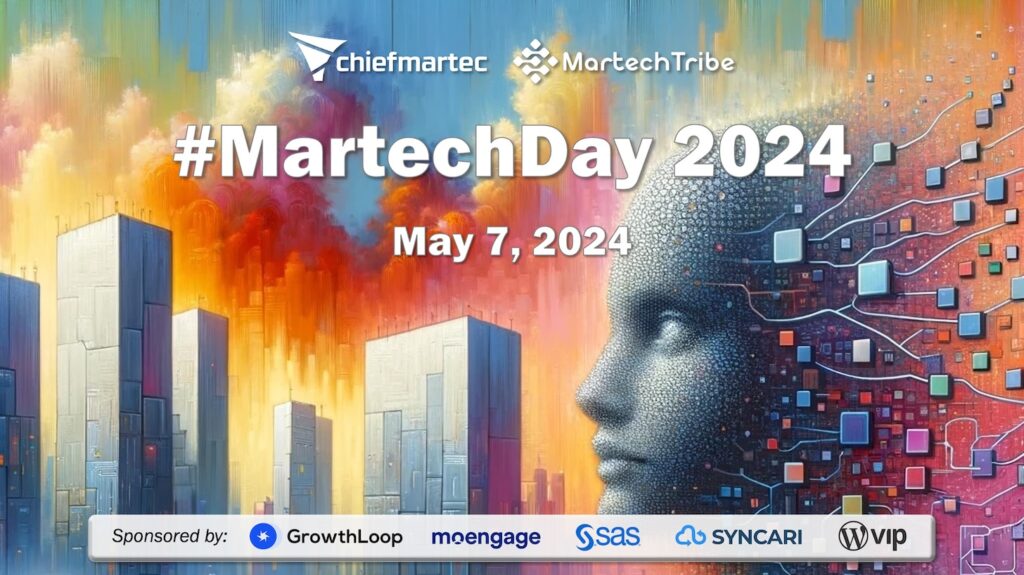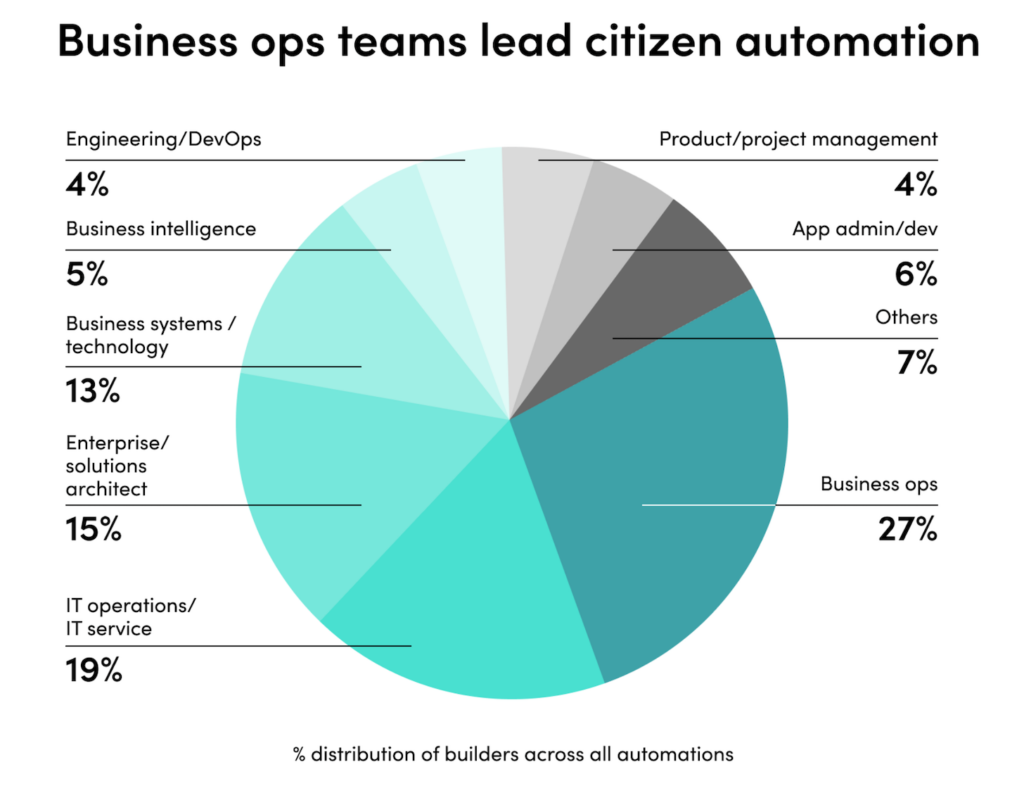The following is a guest post by Jay Baer, one of the most influential marketing authors and speakers out there. Jay’s last book, Youtility, was highly inspirational in my company’s shift towards interactive content a couple of years ago. He was also very kind and helpful in giving me advice when I started working on my own book, Hacking Marketing.
This guest post is based on Jay’s new book, Hug Your Haters — illuminating customer service as the new marketing and the role that a new generation of marketing technology plays in its success. Terrific food for thought.
Customer service is the new marketing. It is the way that businesses are differentiating, and companies that can provide faster, more empathetic customer care reap loyalty and churn reduction rewards that can have geometric impacts on profitability.
The Optimal Customer Service Scenario: Self-Service
The best way to deliver outstanding customer experience via service is perhaps unexpected: to let customers to it for themselves. If customers can easily and thoroughly address their problems on their own, they will seek to do so. Self-service is always the most efficient path to resolution, because customers don’t have to wait on your business to respond. As Gartner’s Michael Moaz says, “The best phone call is the one that didn’t happen.”
According to Kate Leggett, principal analyst at Forrester Research, self-service increases customer satisfaction and lowers costs for the business. So it makes a lot of sense, on both the customer experience and cost efficiency fronts, to mine your complaints and feedback for patterns and commonalities, and then address those issues with easy-to-access online information.
Customers love this. Forrester found that 72 percent of consumers prefer using a company’s website to answer their questions. But businesses are not universally adept at this self-service approach, as only half of customers can find the information they need online.
This is puzzling because many customer questions and frusrations are repeats. According to Rahul Sachdev from Get Satisfaction (now a division of Sprinklr), approximately one-third of customer questions are repeat or common issues. The objective with self-service is to determine all of those likely customer questions, and then provide answers to them, ideally in multiple online formats—text, video, audio, photographs, infographics and beyond.
Social media customer service pioneer Frank Eliason praises Amazon.com for their devotion to this approach.
“Amazon has a model where they believe that if you have to contact us, our website is screwed up and we need to fix it. They try to ensure that no question is asked twice,” he says. “Two of the things that companies need to get much better at are taking feedback, and then not just addressing the customer’s issue, but addressing it for all customers. That is where you get your greatest value. Instead, most companies have the mindset that customers are bad because they contact you.”
The Second-Best Customer Service Scenario: Community
If the most efficient way to get consumers answers is to allow access to them in a self-service capacity, the next best approach may be to enable support from a robust customer community. Like self-service, providing a mechanism where customers can assist one another can result in significant decreases in contacts and complaints reaching the company.
Esteban Kolsky believes community-based service will continue to grow in importance, because collectively, the community knows more than any one customer service representative possibly could.
Community-based service certainly works for Microsoft Xbox. James Degnan from XBox says 70 to 80 percent of all consumer questions are answered by the community, mostly by official “Ambassadors” that have been sanctioned to do so. When they find an issue they can address in the XBox discussion boards, they are empowered to jump in and provide a solution. Degnan describes it as a “marriage of forums and peer-to-peer help.”
The financial implications of this program are staggering and support findings from Gartner, whose research suggests that companies that implement community-based support can reduce costs by 10 to 50 percent.
Sachdev’s Get Satisfaction is a longstanding platform provider that companies use to connect with their customers online through communities. He understands that the community is only as powerful as the advocates that spend their time helping other customers.
One of Get Satisfaction’s customers is Canadian mobile phone provider Koodo, a division of Telus. Koodo’s business model aims to provide the least expensive cell phone service in Canada while still providing great customer service. Providing exceptional customer service at a rock-bottom price can be mutually exclusive in some cases, as Sachdev explains.
“Every time a customer calls you about a question or a problem, that could cost the company between 10 dollars to 50 dollars per interaction. And for a business like Koodo, the average revenue per user might only be 40 or 50 dollars per month. So if every customer called you once a month, that would totally destroy the economics of that business,” he says.
Koodo launched a Get Satisfaction community support center online, called Mobile Masters. Customers designated as “Mobile Masters” are passionate about the company, and like the XBox Ambassadors, answer most of the questions from other consumers—as many as 99 percent of all inquiries.
“If you were to design a customer support department from scratch today, would you create a one-to-one channel? You wouldn’t. You would actually think about something closer to a community. So, why don’t we do that all the time?” Sachdev asks.
“Businesses often have a misperception that high-touch customer care and personalized customer care is needed by everybody. My response is, ’It is certainly needed by some subset of customers, but actually not everybody.’ And the new generation actually values convenience, self-help, and community help much more than the older generation, and actually is much more willing to contribute answers too,” he says. “And I think we should just embrace that and redesign customer support processes, starting with community first, and thinking about telephone and e-mail as the second option and not the first option.”
Online communities can also breed deep insights that allow businesses and organizations to change their offerings, communicate more effectively, and enhance customer service when it does need to be provided on a one-on-one basis. Vision Critical is a software platform company that creates and operates these type of insight communities, creating a flow of “collective wisdom” from customers that helps the community owners improve their operations. A recent Vision Critical community in Montreal, Quebec sought to collect feedback from users of public transportation in advance of a merger of transit lines and methods by the Societe de Transport de Montreal.
More than 7,000 people have participated in the My Voice, My STM community and the subsequent insights are very useful, according to Societe de Transport de Montreal Marketing Director Pierre Bourbonniere. “STM has been able to use the insight community to quickly turn around feedback, target specific types of riders or prospects and cut costs,” he says.
The benefits of community support can transcend reduced customer service expenses and insight generation, and actually create new revenue in the process. That’s the premise of customer service and advocacy platform Needle, the software and training company that puts your customers to work.
“We find the advocates. For example, Adidas’ best customers who are just passionate about Adidas soccer and are already talking about Adidas in social media and in forums. And we put them to work to drive sale for Adidas,” says Amy Heidersbach, Needle’s Chief Marketing Officer.
Using a live chat function on the company website, potential customers are connected with Needle-powered advocates, real customers of the company. These advocates aren’t in a call center; they are in their own living room or kitchen, working part-time on a revenue share basis to spread their passion, answer questions, and direct website visitors to the best possible product.
Norwegian Cruise Line has been a Needle customer since 2012. A cruise is a big purchase festooned with uncertainty. Which ship should I book? Which itinerary? What excursions?
“Barrie’ is a cruise expert who loves answering questions, and is the on the top-performing Needle advocates in the Norwegian Cruise Lines community. Since she’s been a certified Needle advocate for NCL, she has sold more than $5 million worth of cruises, according to Heidersbach.
“If you are on Norwegian Cruise Lines’ website and are exhibiting behavior we’ve identified as needing help, you might see a window appear that says, “Would you like to talk with Barrie, a cruise expert?’, she explains. “And if you click on that you are then put into a chat conversation with Barrie. And she’s a real person. You can see her real photo. She can talk with you about all the cruises she’s been on. And she knows the dimensions of the state rooms and how many inches are between the end of the bed and the wall. She knows it all.”
The Third-Best Customer Service Scenario: Specialized Apps
Needle is integrated into the company website. Get Satisfaction can be included in a website, and can also be threaded into a business Facebook page. Ratings and reviews software like Bazaarvoice also runs as a layer on top of an existing website. All of these solutions embrace the protocol that customer service functionality is part of the broader company communication infrastructure. But what if it wasn’t?
What if, in the same way consumers have adopted Yelp for local business reviews, and TripAdvisor for travel reviews, they gravitate toward specific applications to complain and to contact companies?
George Klein believes that aligning customers and businesses in a mobile application that is purpose-built to collect and address feedback yields the best possible outcomes for both parties. Klein is the founder of Peoplocity, a free mobile app that allows consumers to send a message at any time to any business to share feedback and request problem resolution. For customers, it works almost like a text message. They open the app, it locates nearby businesses, and they select the right merchant. They type their message, and it’s delivered to the company immediately. Businesses can then respond to customers using an email-like system. The optimal scenario, according to Klein is that the issue is resolved quickly, while the consumer is still at the location.. Peopleocity also provides businesses with an in-depth analysis of what’s being said and valuable trend data that can be used to proactively improve customer experiences.
Klein explains, “A manager at the end of the week might say, ‘You know, that’s the second time I’ve heard about a problem with the bathrooms. Let me search for bathrooms,’ and it shows all the bathroom messages and he can see, ‘Well, you know, that’s always happening on Saturdays. That’s when we have a different crew in here,’ or, ‘Geez, that’s the third time someone said something nice about John. Let’s make sure we give him a raise or a pat on the back and make sure we keep him,’ that sort of thing.”
Targeting the restaurant and bar industry, Coastr is another new application that seeks to meld customer service and high-touch customer experience.
“The restaurant industry as a whole has something like a 68% annual turnover rate,” says Coastr’s CEO Brady Fletcher. “The staff members who know Jay Baer and what he prefers, are not likely to be there next year. If you have a relationship with the bartender who always ensures that you have a seat for your favorite sporting event and then all of the sudden that bartender leaves, your loyalty to that venue is gone too. If you don’t have that personal touch point anymore, it changes your entire customer experience and that doesn’t really work for the restaurant.“
Coastr allows all team members, long-standing and new, to access customer history, and be able to act upon it accordingly. The mobile application is powered by beacon technology that alerts the staff (armed with mobile phones and the business version of Coastr) that a known customer has entered the business, and displays that customer’s preferences. The platform also encourages customers and staff to share photos and interact inside Coastr, creating a private social network centered on dining and nightlife.
“Coastr is where you can instant message with staff and friends and ask for recommendations,” Fletcher says. “If I was on my way down to New York for instance and I fired up the Coastr app, I could see where my friends in New York had gone for food. So that extends it to a peer-to-peer recommendation platform.”
Each time a customer enters a Coastr-enabled business, the presence is logged, as is the staff that served that customer. This creates a rich stream of data that can be used to determine previously hidden patterns of customer loyalty and service excellence. Coastr even tracks staff performance across multiple locations, useful in circumstances where a person bartends at multiple establishments, for example.
After each visits, Coastr contacts the customer through the application and asks for feedback the food, the service, and other elements of the experience. Negative feedback is immediately sent to a manager for follow-up.
In addition to task-specifics applications like Peopleocity and Coastr, advanced mobile app versions of popular reviews sites like Yelp, TripAdvisor, Angie’s List, and many more will make it even easier for customers to interact with businesses seamlessly and instantly in the near future.
The Fourth-Best Customer Service Scenario: Mobile Messaging Apps
Private, online messaging applications are likely to disrupt and transform the world of customer service in the next three to five years. In the Definitive Guide to Social Customer Service, Conversocial CEO and Founder Joshua March provides an excellent overview:
“Mobile messaging consists of applications that provide messaging functionality on phones and tablets delivered via data, rather than SMS [text messaging]. WhatsApp and Facebook Messenger are the biggest in the West; WeChat is huge in Asia. These messaging apps are the biggest new force in communication, and still growing. The daily message volume on WhatsApp (owned by Facebook) is now 50% bigger than global SMS volume. Their functionality for 1:1 messaging has everything you need for service: real-time, asynchronous, carrying a persistent identity and plugged into smartphone notifications. These messaging apps have the potential to become the biggest service channel for the mobile, social customer.“
Essentially, Facebook wants WhatsApp and Facebook Messenger to become the new email.
Recently, I’ve been getting a lot of Facebook Messenger communications from people who formerly would have emailed me. Perhaps the same thing is happening to you. And as we saw in chapter four, Facebook Messenger is also now being used between companies and customers in a customer service context.
WhatsApp is already a behemoth, with 1 billion monthly users world-wide, as of January, 2016 By way of comparison, the much more ballyhooed Twitter has approximately 300 million monthly users.
China’s WeChat is attempting the same trick in Asia, and that platform not only allows for private messaging and customer support, but in-app product purchases as well.
Email is not going to fully disappear, but it will become compartmentalized and marginalized the way that direct mail is today. Occasionally you get an actual letter in the post box, but typically what you get in your physical mailbox is promotional: catalogs and credit card offers and things of that nature, uni-directional blasts from companies to people. If Facebook is successful in their quest to move all person-to-person and person-to-company communications to Messenger and WhatsApp, email will follow the same pattern as snail mail.
Young people have already made this shift. They don’t use email. My two teenagers never use the phone, and the only time they check email is to confirm an online purchase. Otherwise it’s all texting, Snapchat, Facebook Messenger, and WhatsApp. Thirty-six percent of Millennials would contact a company more frequently if they could text them, according to Aspect Software.
The same shift will happen to all businesses. We will be hugging our haters on WhatsApp instead of email. And some organizations are already doing it today, assisted by an emerging ecosystem of software providers like Wasify and CasenGo that have developed interfaces to make it easier to use WhatsApp for real-time customer service.
The advice in my book Hug Your Haters is to answer every customer complaint, in every channel, every time. But it’s impossible to do so without MarTech leading the way. And the disruption in customer service is only just beginning.
This post is drawn from Jay Baer’s new book, Hug Your Haters: How to Embrace Complaints and Keep Your Customers. Special bonus offer available at HugYourHaters.com. Find out why Guy Kawasaki calls the book, “A transformational work in the history of customer service.”




The best of the best scenario: proactive service (fixing issues or providing instructions before customers finds out about an issue)
MarTech and customer service unbelievable!Great post.
Excellent post Scott! To build the long-lasting loyal relationships with online customers, businesses have to create mechanisms to collect, store and centralize customer data, and then channel this data to different martech tools in order to build more efficient marketing strategies.
Megan barnett